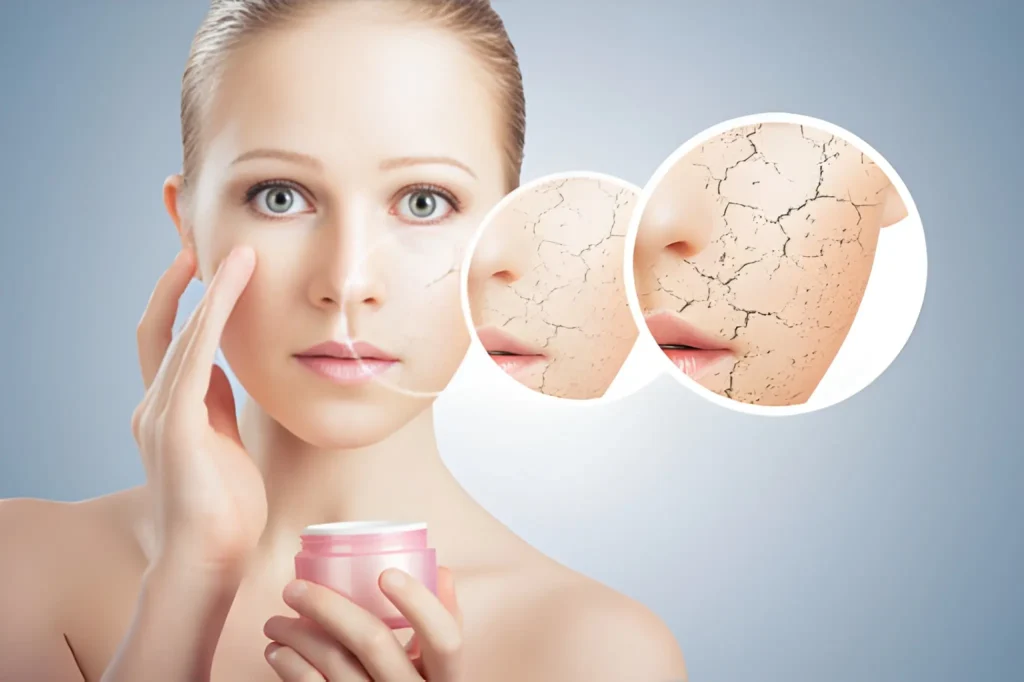Dry skin occurs when the skin barrier is compromised and cannot retain adequate moisture, leading to increased transepidermal water loss and a cycle of dehydration. Selecting effective skin products for dry skin requires understanding the difference between humectants, emollients, and occlusives—three distinct types of moisturizing agents that work through different mechanisms. Research indicates that products combining all three categories provide superior hydration compared to single-ingredient formulas, with studies showing up to 40% improvement in skin hydration levels when using multi-functional formulations. The key is identifying ingredients that not only add moisture but also repair the compromised barrier that’s causing the dryness in the first place.
Understanding Why Your Skin is Actually Dry
Before you start throwing products at your face, it helps to understand what’s actually going wrong. Dry skin isn’t just about not drinking enough water—though that doesn’t help—it’s about your skin barrier being damaged or not functioning properly.
Your skin has this protective outer layer made up of skin cells and lipids arranged kind of like a brick wall. When that structure gets messed up from things like harsh cleansers, environmental damage, aging, or even genetics, water escapes from your skin faster than it should. That’s called transepidermal water loss, or TEWL for short.
A study in the Journal of Investigative Dermatology found that people with dry skin have significantly lower levels of natural moisturizing factors and barrier lipids compared to people with normal skin. So you’re not imagining it—your skin literally has less of what it needs to hold onto moisture.
The tricky part is that a lot of products marketed for dry skin don’t actually address this underlying problem. They might make your skin feel better temporarily, but they’re not fixing the barrier issue that’s causing the dryness in the first place.
The Three Types of Ingredients You Actually Need
This is where things get practical. There are three main categories of moisturizing ingredients, and honestly, you need all three if you have seriously dry skin.
Humectants are ingredients that pull water into your skin. Think hyaluronic acid, glycerin, urea, and aloe vera. These are great, but here’s the catch—they pull moisture from wherever they can find it. In a humid environment, they pull it from the air. In a dry environment, they can actually pull water from deeper layers of your skin up to the surface, where it just evaporates. Not ideal. Research shows that humectants work best when combined with other ingredients that seal that moisture in.
Emollients are what fill in the cracks between your skin cells and make your skin feel smooth. These include things like squalane, jojoba oil, shea butter, and ceramides. Ceramides are particularly important because they’re one of the natural lipids your skin barrier is made of. A clinical trial found that products containing ceramides improved dry skin symptoms by 31% over 8 weeks.
Occlusives are the heavy hitters that create a physical barrier on your skin to prevent water loss. Petrolatum is the most effective occlusive out there, reducing water loss by up to 98%. Other occlusives include dimethicone, lanolin, and mineral oil. Yeah, these sound less fancy than some trendy plant oils, but they’re incredibly effective.
Reading Labels Without Getting a Chemistry Degree
Product labels can be overwhelming, but there are some things you can look for that signal a product will actually help dry skin.
First, check where ingredients fall in the ingredient list. Ingredients are listed by concentration, so if your hyaluronic acid is listed after preservatives, there’s barely any in there. You want your key moisturizing ingredients in the first five to seven ingredients listed.
Look for products that mention “barrier repair” or “barrier support.” This usually means they contain ceramides, cholesterol, and fatty acids in the right ratios. A landmark study found that a 3:1:1 ratio of ceramides, cholesterol, and free fatty acids most effectively repairs the skin barrier, and some products are specifically formulated with this ratio.
Avoid products with high amounts of alcohol denat, fragrance, or essential oils near the top of the ingredient list. These can be irritating and actually damage your barrier further, even if the product feels nice when you first apply it.
Why Your Cleanser Might Be the Problem
Here’s something that took me way too long to figure out—sometimes the issue isn’t your moisturizer, it’s your cleanser. If you’re stripping your skin every time you wash it, no amount of moisturizer is going to fix that.
Foaming cleansers, especially ones with sulfates like sodium lauryl sulfate, are notorious for stripping the skin barrier. A study in Contact Dermatitis found that SLS-based cleansers significantly increased TEWL and skin pH disruption compared to gentler surfactants.
For dry skin, you want a cream or oil-based cleanser, or at minimum, a gentle gel cleanser with a pH close to your skin’s natural pH of around 5.5. When your cleanser is too alkaline, it disrupts the acid mantle that protects your skin barrier.
I switched to a cream cleanser about a year ago and honestly, it made more difference than changing my moisturizer did. Sometimes the problem is what you’re taking away, not what you’re putting on.
Layering Products the Right Way
The order you apply products actually matters more than I thought it would. The basic rule is to go from thinnest to thickest consistency, but with dry skin, there’s a bit more to it.
Start with a hydrating toner or essence while your skin is still damp from cleansing. This is where your humectants come in—they work best on damp skin because they have moisture to grab onto. Then apply your serum if you’re using one. Look for serums with hyaluronic acid or niacinamide, both of which help with hydration and barrier repair.
Next comes your moisturizer, which should have a good mix of emollients and some occlusives. And if your skin is really dry, especially at night, you might want to add a final occlusive layer like a facial oil or even just a thin layer of petroleum jelly. I know that sounds intense, but dermatologists call this “slug life” and it’s genuinely effective for severely dry skin.
Research shows that this layering approach can improve skin hydration by up to 50% compared to using a single moisturizer alone.
Also Read



